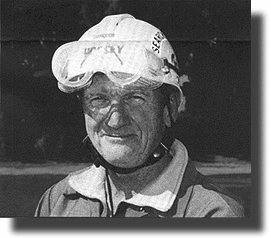Ray has heart attack while training
|
July 11, 1998 |
 |
On Saturday, July 11, 1998 the team was conducting its annual summer technical training off South Ridge Trail when veteran team member Dr. Ray Hussey suffered a heart attack.
 That morning the team
assembled at the South Ridge Trail trailhead at
9:00 a.m. and proceeded up the trail to the
training site. Henry Negrete and Bob Baker, who
had planned the training, were in the process of
orienting the two teams for their mock missions
when Dr. Ray realized that something was
"not right." From atop a large rock,
Dr. Ray mentioned to team member Jim Zuberbuhler
that he did not feel very good. Zuberbuhler,
Negrete, and Mike Wimbrow belayed Dr. Ray from
the top of the rock to an area behind the site to
get him out of the sun and allow him to lie down.
That morning the team
assembled at the South Ridge Trail trailhead at
9:00 a.m. and proceeded up the trail to the
training site. Henry Negrete and Bob Baker, who
had planned the training, were in the process of
orienting the two teams for their mock missions
when Dr. Ray realized that something was
"not right." From atop a large rock,
Dr. Ray mentioned to team member Jim Zuberbuhler
that he did not feel very good. Zuberbuhler,
Negrete, and Mike Wimbrow belayed Dr. Ray from
the top of the rock to an area behind the site to
get him out of the sun and allow him to lie down.
Dr. Ray was hot, sweaty and weak. His initial thought was that he was having an allergic reaction to some medication he was taking. Zuberbuhler radioed for Baker, (an EMT,) to assist with Dr. Ray’s care. Baker responded immediately. Dr. Ray’s vital signs remained normal and after resting in the shade for approximately 45 minutes, his condition appeared to improve. Team members remained with Dr. Ray and continued to monitor his condition. Over time, Dr. Ray’s status gradually began to deteriorate. He became more uncomfortable, suffering from muscle cramps and nausea.
With no apparent improvement in his condition, it was decided to evacuate Dr. Ray from the site. The team called Riverside Sheriff’s Department dispatch and requested a helicopter, as others set up a raise to the top of the rock. The Sheriff’s Department’s aviation unit was "down" and therefore not available. Wimbrow suggested that a call be made to Landells Aviation in the Desert. Landells pilot Steve DeJesus was appraised of the situation. DeJesus stated that he’d be on his way immediately with an estimated ETA of 20 minutes. Meanwhile, the team contacted Desert Hospital which was ready for the helicopter’s arrival.
After the phone calls were made, Baker, acting as the primary caregiver, announced that Dr. Ray was beginning to present chest pain and shortness of breath. Dr. Ray was also suddenly experiencing a substantial amount of back pain. The team immediately proceeded to tie him into the litter and lift him to the top of the rock. DeJesus arrived on time and immediately set the helicopter down so that the door on the pilot’s side could be removed. Negrete and Wimbrow removed the door and in less than one minute team members were loading Dr. Ray into the helicopter. Baker accompanied Dr. Ray in the helicopter. Notified that the chopper was en route, Desert Hospital ER confirmed it was standing by.
Baker and Dr. Ray had some tense moments in the air, with Dr. Ray drifting in and out of consciousness. At one point when Dr. Ray appeared to be on the edge of full cardiac arrest, Baker, in his inimitable way, told Dr. Ray that it was not an option to die on his watch. Dr. Ray responded appropriately (as anyone who knows Bob Baker would expect him to!). Upon arrival at the hospital, tests were performed and it was determined that Dr. Ray suffered 95% occlusion of the right coronary. An angioplasty was performed on the right coronary to clear the blockage. By the time team members arrived at the hospital 90 minutes later, Dr. Ray was sitting up in the Cardiac ICU surrounded by his family, alert and very happy to be alive.
One month after his heart attack, Dr. Ray is recuperating at home. He walks around the block twice a day and has begun riding his bicycle. He claims to have no discomfort. It is obvious that Dr. Ray, who is not used to taking it easy, cannot wait to get back to his usual busy schedule.
Dr. Ray is especially appreciative of the efforts made by Bob Baker who was the primary caregiver on the rock and Dr. Ray’s advocate at the hospital. He also stated that, "Steve DeJesus is the best damn pilot in the world." It is Dr. Ray’s opinion that a prolonged litter evacuation was not an option. He believes, (as does everyone else associated with the rescue) that he would not have made it had he been wheeled out in a litter. Dr. Ray is also thankful to the Team for all the assistance and support on the day of the rescue, as well as the support he has received over the last month. He appreciated the visits to the hospital, cards, gifts, telephone calls and visits to his home. Dr. Ray stated that he thinks he has been given "a second chance." The entire Team looks forward to sharing that second chance with him when he returns to active duty with RMRU!